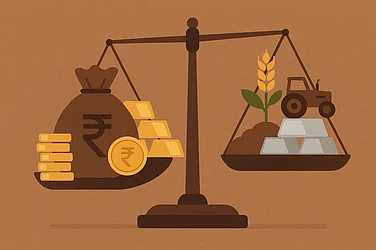The Reserve Bank of India made a decisive move today (June 6), cutting the policy repo rate by 50 basis points to 5.50 per cent. This marks the third consecutive rate cut since February, taking the total easing to 100 basis points in under five months. But in a notable shift, the central bank also moved its policy stance from “accommodative” to “neutral,” signaling a pause might be around the corner.
The 55th meeting of the Monetary Policy Committee (MPC), held from June 4 to 6 under the chairmanship of Governor Sanjay Malhotra, came at a time when inflation is slowing sharply and growth, while stable, is still contending with global headwinds.
Why has MPC cut the repo rate again?
Explaining the rationale behind this repo rate cut, the RBI Governor noted a significant softening in inflation and also cited the need to support growth as the key driver behind its aggressive rate cutting cycle as of the last two meetings.
Now, let’s look at the top 10 key takeaways from RBI’s June 2025 policy announcement:
1. Third Consecutive Rate Cut
Notably, the most significant announcement is MPC’s decision to reduce the repo rate by 50 bps. Of the six-member panel, five had voted in favour of a 50 bps cut, while one preferred a smaller 25 bps reduction.
This repo rate reduction follows two previous cuts in 2025.
2. Stance Shifted from Accommodative to Neutral
After a series of cuts, the RBI is signaling that it may take a breather. The policy stance has been changed to neutral, meaning further rate actions will depend on incoming data rather than any pre-set bias toward easing.
3. Inflation has dropped
Headline CPI inflation has cooled to 3.2 per cent in April 2025, the RBI governor announced citing that this was helped largely by a persistent drop in food prices. This is the lowest level seen since 2029 and well below the upper limit of the RBI’s 2 to 6 per cent comfort band.
4. CPI Inflation Revised ‘Downward’
Malhotra also said that with expectations of an above-normal monsoon and steady food supply, inflation for financial year 2026 is now seen averaging almost 3.7 per cent. Earlier this projection was clocked at 4 per cent. This is how RBI projects CPI inflation in the next four quarters:
Q1: 2.9 per cent
Q2: 3.4 per cent
Q3: 3.9 per cent
Q4: 4.4 per cent
5. GDP growth is ‘steady’
The outlook for India’s GDP growth is optimistic. Malhotra noted that despite global uncertainty, the country;s GDP is expected to grow at 6.5 per cent in the financial year 2026 - the same as the last year. The central bank sees stable momentum in this regard, largely driven by rural demand, private consumption, and government-led capex. The quarter-wise projection of GDP growth is as follow:
Q1: 6.5 per cent
Q2: 6.7 per cent
Q3: 6.6 per cent
Q4: 6.3 per cent
6. Fuel Inflation Outlook
The central bank has noted a reversal of deflationary conditions for the fuel group. After months of deflations, the fuel group saw price hikes in March and April, partly reflecting the rise in LPG prices. Core inflation has also remained largely steady and contained during March-April, despite increase in gold prices exerting upward pressure.
7. Food Inflation now on a ‘Downward Stretch’
The MPC has noted that food prices have now declined for six months in a row. Malhotra projected that record wheat and pulse output from the rabi season, aided by positive monsoon forecasts, could help keep prices under control in the coming quarters.
8. Rural Demand May Improve
RBI also noted a strong rural activity and moderate inflation expectations among the rural households. This, along with stable employment trends and high optimism for the kharif season may bode well for consumption.
9. External Risks - a point of concern
Though domestic signals are encouraging, Malhotra flagged concerns over the ongoing geopolitical tensions and global trade uncertainty. Weather-related risks, including El Niño spillovers, are also being closely watched, the governor stated.
10. Limited space left for further cuts
With 100 basis points already off the table this year, the RBI acknowledged there is ‘very limited space’ left for additional easing. The change in stance reflects this caution. Future policy action will hinge on how inflation and growth numbers evolve over the next few months.
11. The Bottom Line
The next MPC policy review is scheduled for August 4–6. For now, the central bank appears to have done its bit, frontloading support for growth while keeping an eye on inflation, which finally seems to be playing along.














